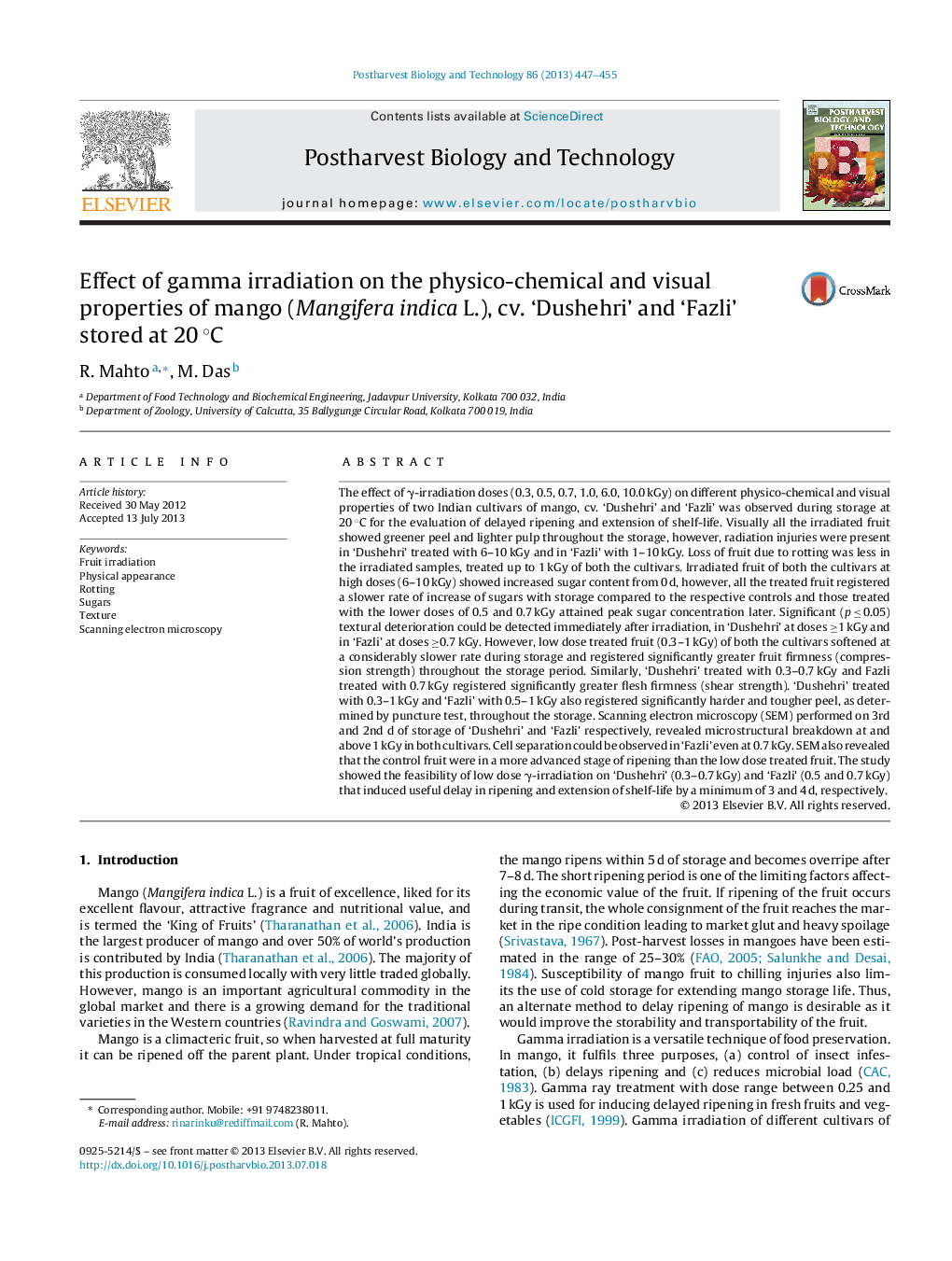| Article ID | Journal | Published Year | Pages | File Type |
|---|---|---|---|---|
| 6378816 | Postharvest Biology and Technology | 2013 | 9 Pages |
Abstract
The effect of γ-irradiation doses (0.3, 0.5, 0.7, 1.0, 6.0, 10.0 kGy) on different physico-chemical and visual properties of two Indian cultivars of mango, cv. 'Dushehri' and 'Fazli' was observed during storage at 20 °C for the evaluation of delayed ripening and extension of shelf-life. Visually all the irradiated fruit showed greener peel and lighter pulp throughout the storage, however, radiation injuries were present in 'Dushehri' treated with 6-10 kGy and in 'Fazli' with 1-10 kGy. Loss of fruit due to rotting was less in the irradiated samples, treated up to 1 kGy of both the cultivars. Irradiated fruit of both the cultivars at high doses (6-10 kGy) showed increased sugar content from 0 d, however, all the treated fruit registered a slower rate of increase of sugars with storage compared to the respective controls and those treated with the lower doses of 0.5 and 0.7 kGy attained peak sugar concentration later. Significant (p â¤Â 0.05) textural deterioration could be detected immediately after irradiation, in 'Dushehri' at doses â¥1 kGy and in 'Fazli' at doses â¥0.7 kGy. However, low dose treated fruit (0.3-1 kGy) of both the cultivars softened at a considerably slower rate during storage and registered significantly greater fruit firmness (compression strength) throughout the storage period. Similarly, 'Dushehri' treated with 0.3-0.7 kGy and Fazli treated with 0.7 kGy registered significantly greater flesh firmness (shear strength). 'Dushehri' treated with 0.3-1 kGy and 'Fazli' with 0.5-1 kGy also registered significantly harder and tougher peel, as determined by puncture test, throughout the storage. Scanning electron microscopy (SEM) performed on 3rd and 2nd d of storage of 'Dushehri' and 'Fazli' respectively, revealed microstructural breakdown at and above 1 kGy in both cultivars. Cell separation could be observed in 'Fazli' even at 0.7 kGy. SEM also revealed that the control fruit were in a more advanced stage of ripening than the low dose treated fruit. The study showed the feasibility of low dose γ-irradiation on 'Dushehri' (0.3-0.7 kGy) and 'Fazli' (0.5 and 0.7 kGy) that induced useful delay in ripening and extension of shelf-life by a minimum of 3 and 4 d, respectively.
Related Topics
Life Sciences
Agricultural and Biological Sciences
Agronomy and Crop Science
Authors
R. Mahto, M. Das,
